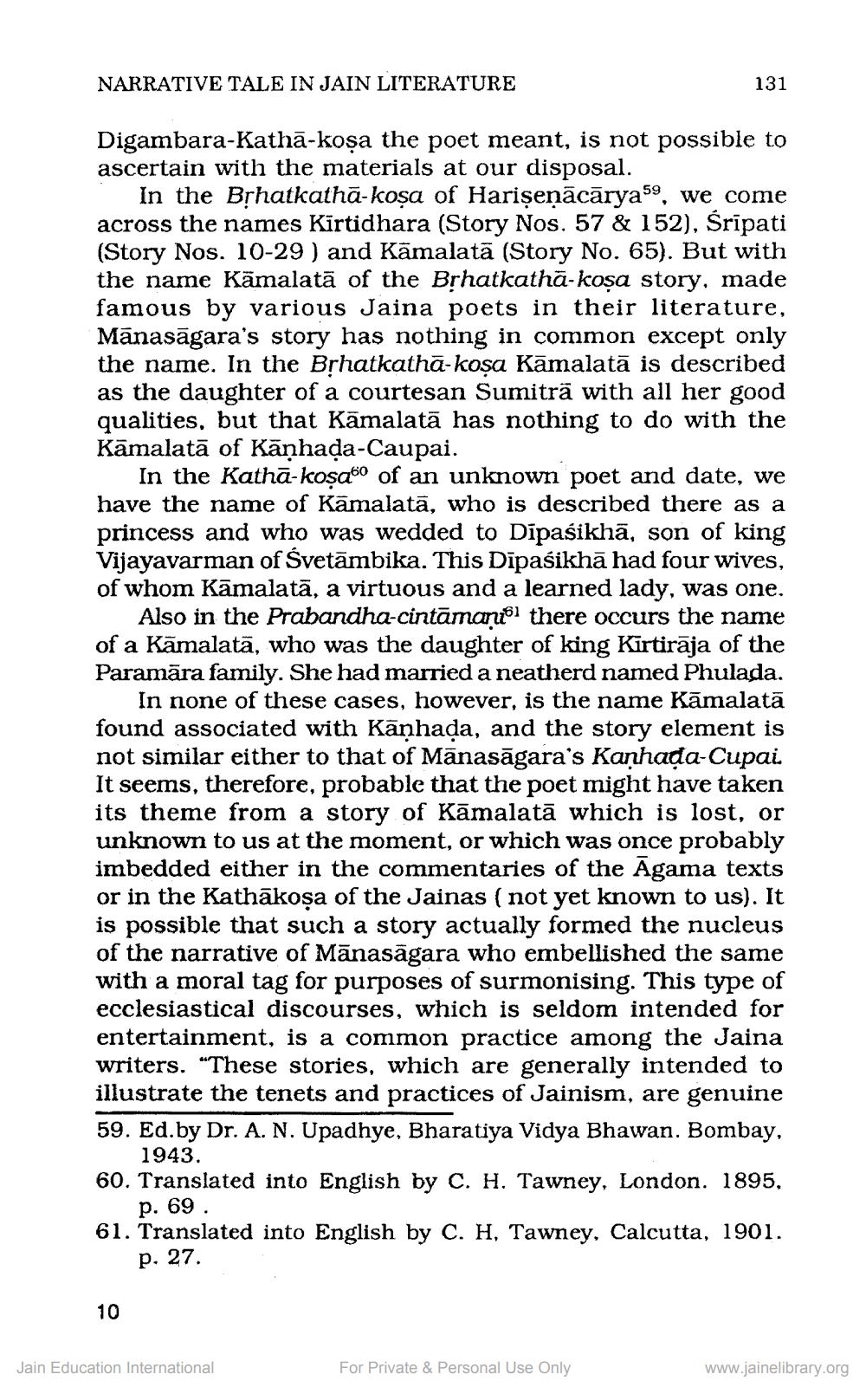________________
NARRATIVE TALE IN JAIN LITERATURE
131
Digambara-Kathā-koşa the poet meant, is not possible to ascertain with the materials at our disposal.
In the Bșhatkathā-koşa of Harişenācārya59, we come across the names Kīrtidhara (Story Nos. 57 & 152), Srīpati (Story Nos. 10-29 ) and Kāmalatā (Story No. 65). But with the name Kämalatā of the Brhatkathā-koşa story, made famous by various Jaina poets in their literature, Manasāgara's story has nothing in common except only the name. In the Bșhatkatha-koşa Kāmalatā is described as the daughter of a courtesan Sumitrā with all her good qualities, but that Kamalatā has nothing to do with the Kāmalatā of Känhada-Caupai.
In the Kathā-koşa6o of an unknown poet and date, we have the name of Kāmalatā, who is described there as a princess and who was wedded to Dīpaśikhā, son of king Vijayavarman of Svetāmbika. This Dīpaśikhā had four wives, of whom Kāmalatā, a virtuous and a learned lady, was one.
Also in the Prabandha-cintāmanusi there occurs the name of a Kāmalatā, who was the daughter of king Kirtirāja of the Paramāra family. She had married a neatherd named Phulada.
In none of these cases, however, is the name Kāmalatā found associated with Kanhada, and the story element is not similar either to that of Mānasāgara's Kanhada-Cupai. It seems, therefore, probable that the poet might have taken its theme from a story of Kāmalatā which is lost, or unknown to us at the moment, or which was once probably imbedded either in the commentaries of the Agama texts or in the Kathākoşa of the Jainas ( not yet known to us). It is possible that such a story actually formed the nucleus of the narrative of Mānasāgara who embellished the same with a moral tag for purposes of surmonising. This type of ecclesiastical discourses, which is seldom intended for entertainment, is a common practice among the Jaina writers. “These stories, which are generally intended to illustrate the tenets and practices of Jainism, are genuine 59. Ed.by Dr. A. N. Upadhye, Bharatiya Vidya Bhawan. Bombay,
1943. 60. Translated into English by C. H. Tawney, London. 1895,
p. 69 61. Translated into English by C. H, Tawney, Calcutta, 1901.
p. 27.
10
Jain Education International
For Private & Personal Use Only
www.jainelibrary.org




